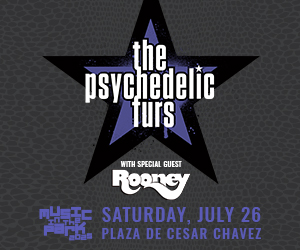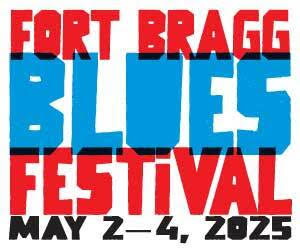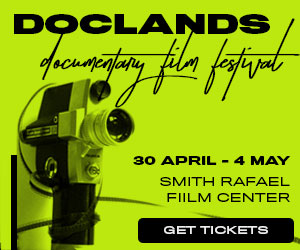“Some have asked me if the tarot can predict the outcome of the current pandemic,” says Hess, a regular Bohemian contributor known for her community and social-issue-themed features, who is also the life partner of its editor Daedalus Howell. “Tarot can show you how you can approach the situation, creating an outcome for you. And as I always say, it’s not set in stone—if you don’t see a desirable outcome, you can always consider what you can do differently now to evoke a different outcome later.”
Hess’ new deck just might help with navigating the path in the days that lie ahead. Included in the box set she created are a deck of 78 luminous, hand-painted cards and a 178-page guidebook, which she wrote to help people interpret the cards on their own. Tarot cards are designed to help focus the seeker’s intentions; to provide a little cosmic perspective about what is and what may be; and to help meaning reveal itself through seemingly random assemblages of figures, objects and animals.
Often dismissed as New Age or occult, the tarot is not as old as one might think. Tarot first appeared as a deck of playing cards in 15th-century Europe, becoming trendier in later centuries when used for divination. The suits associated with contemporary playing cards—spades, clubs, hearts and diamonds—varied significantly by region. The modern tarot includes five suits: triumphs, cups, wands, swords and pentacles. The SparkTarot replaces swords with serpents, and pentacles with stones.
Hess’ figures are mostly female, and intentionally represent racial diversity, making the deck not only more inclusive but opening up new possibilities for interpretations.
“Traditional tarot decks are pretty medieval; white and male oriented,” Hess says. “I wanted this deck to be diverse and feminine, so most of the cards are women, even those that are traditionally male. That said, there are a couple of potentially male characters in the deck.”
Hess has a degree in fine arts and has worked as a website and graphic designer as well as a journalist. She first became interested in creating cards as a child.
“I’ve always loved card decks,” she says. “When I was a kid, I made a deck of playing cards with different art than the usual plain hearts, diamonds, clubs and spades. I remember thinking that the simple imagery on the playing card deck was a missed opportunity for art.”
Over the years she began creating several tarot decks but never painted more than a few cards each time.
“With this one I accidentally tricked myself into creating it,” Hess says. “My partner and I had just made a feature-length art film and one night we were watching an Agnès Varda movie, Cléo from 5 to 7, to get inspiration for the next film. The opening sequence was a tarot reading. I said, ‘We need a tarot scene in the next film.’”
As the film’s production designer, she very practically decided she only needed to make nine cards for the shot.
“After creating the nine cards, I was on a roll,” she says. “After seven months, I’d painted the entire tarot deck, posted the cards on Instagram as I went, wrote a corresponding guidebook and started a business around it.”
Hence, the “Spark.”
Her art supplies all fit into a portable bag, so she was able to paint most of the cards at cafés around the Bay Area.
“I painted each card very deliberately and with absolute focus on the meaning behind it,” Hess says. “I considered older decks, looked at the imagery, decided what the core experience needed to be and began sketching. After one to three sketches, I’d have my image. Then I drew it into a watercolor sketchbook and painted it. I’d listen to inspiring music or podcasts while painting.”
In the conception phase of SparkTarot, Hess sought to create a deck that leaned towards life’s potential and away from ominous foreboding.
“The imagery on the SparkTarot deck isn’t created to be scary, so it doesn’t cause troubling readings visually, which some decks can do,” Hess says, addressing doubters and those afraid of what a reading will reveal. “As far as the readings themselves, when I read tarot I help guide people to see how they can approach an issue based on their current situation, so they are always in control of how they choose to react.”
Hess’ cards connect phantom threads that stitch together imagery, intention and the latest theories in physics.
“The Tarot has long been considered ‘woo-woo’ or ‘magic,’ but it might also be a perfect example of the quantum concept of collapse,” she writes in her blog. “Wave function collapse—known as the ‘Copenhagen interpretation’—was discovered by Niels Bohr and Werner Heisenberg, and is the proposal that all outcomes of a situation exist simultaneously—also called ‘superposition’—until an observer takes action by observing, which then collapses the possibilities into one state or another.”
Hess, who radiates a youthful glow in her late 40s, believes learning how to take spiritual guidance into one’s own hands is needed now more than ever.
“It has been so fulfilling to use my skills of painting, writing and graphic design with a spiritual project that is also really helpful to people looking for their next steps in life,” she says.
Hess believes tarot can both deepen and heal one’s broken connections to others and the natural world by simply helping them tune into their own process, using imagery with the universe as a guide.
“What is great about tarot is that it is a simple, personal way to see your next step,” Hess says. “Sometimes life can be overwhelming or confusing, and it’s great to have the path illuminated, even just a little bit.”
Hess explains how when one reads tarot, intentions infuse the cards, which informs how their imagery is interpreted. Because the cards represent aspects of life, it’s as if the universe participates in making sense of them—and by extension, one’s own life.
“Maybe someday science will really explain what seems like magic to us now,” Hess says. “Malleable time, possibilities manifested with intention. But for now, we have tarot.”
And what better way to re-enchant the psychic forest in these trying times, than with a little magic?
To learn more, visit SparkTarot.com. [DEPARTMENT OF CORRECTIONS: The print and initial web version of this story failed to disclose that the story’s subject is in a relationship with the editor. It is this publication’s policy for editorial personnel to recuse themselves from stories in which they have a material conflict of interest, which was not done in this case. The Bohemian apologizes for this error.]

















